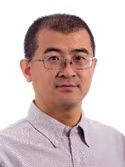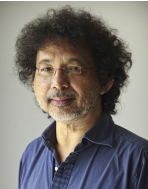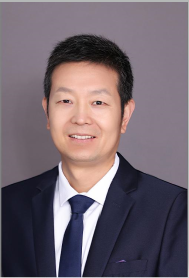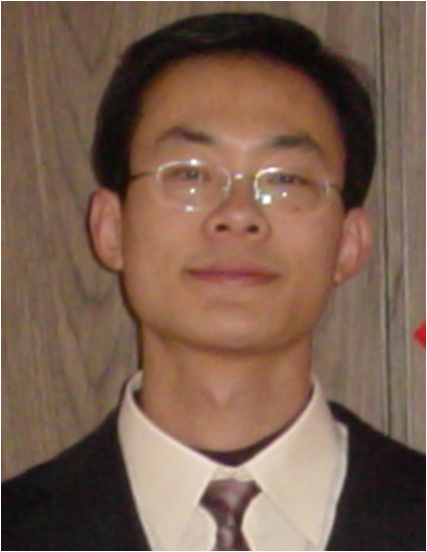
Prof. Jun Yang, Loughborough University, UK (IEEE/IET/AAIA Fellow)
Experience: Jun received the B.Sc. degree in automation from the Department of Automatic Control, Northeastern University, Shenyang, China, and the Ph.D. degree in control theory and control engineering from the School of Automation, Southeast University, Nanjing, China, in 2006 and 2011, respectively. He worked in School of Automation, Southeast University as Lecturer from 2011, Associate Professor from 2014, and Full Professor from 2018 all in Control Systems. Since 2020, he has been with the Department of Aeronautical and Automotive Engineering, Loughborough University, Loughborough, U.K., as a Senior Lecturer and is promoted to a Reader in 2023. His research interests include disturbance observer, motion control, mechatronics, robotics, and automation. Dr. Yang was the recipient of the EPSRC New Investigator Award. He serves as an Associate Editor or Technical Editor for IEEE Transactions on Industrial Electronics, IEEE-ASME Transactions on Mechatronics, IEEE Open Journal of Industrial Electronics Society, etc. He is a Fellow of IEEE, IET, and AAIA.
Title:Safety-Critical Control Under Disturbances: A Control Barrier Function Approach
Abstract:Safety-critical control is significant for autonomous system applications where safety is an utmost concern. Control barrier function (CBF)-based control has shown its promising potential and power in delivering formal safe property of dynamic nonlinear systems. The presence of disturbances has negative effects on CBF-based control, leading to formal safety guarantee violations and degraded control performance. In this talk, we will introduce the background of safety-critical control, highlight the motivation why formal method is required, give a comprehensive tutorial on CBF-based control approaches, and elaborate the emerging methods on safety-critical disturbance rejection control and their applications to interactive robotics and autonomous cranes.

Prof. Zhibo Pang, KTH Royal Institute of Technology, Sweden (H-index 46)
Experience: Prof. Zhibo Pang (M’13, SM’15) received MBA in Innovation and Growth from University of Turku in 2012 and PhD in Electronic and Computer Systems from KTH Royal Institute of Technology in 2013. He is Senior Principal Scientist at ABB Corporate Research Sweden and Adjunct Professor at KTH Royal Institute of Technology and was Adjunct Professor at University of Sydney. He is a Member of IEEE IES Industry Activities Committee, Steering Committee Member of IEEE IoT Technical Community, Vice-Chair of IEEE TC on Cloud and Wireless Systems for Industrial Applications, and Co-Chair of IEEE TC on Industrial Informatics. He is Associate Editor of IEEE TII, IEEE JBHI, IEEE JESTIE and IEEE IoTM. He was awarded “Inventor of the Year Award” by ABB Corporate Research Sweden, three times in 2016, 2018, and 2021 respectively. He works on embodied intelligence, robotics, control, computing, communication, and electronics for Industry 4.0 and Healthcare 4.0. He has many productized research results and 22 granted patents in US, Europe, or Japan. 22 granted patents in US/EU/JP, 120+ journal papers, 60+ conference papers, 40+ invited talks, 2 edited proceedings, Google Scholar citation 8700+, h-index 46.
Title: From open 5G to embodied intelligence: new progresses on the Cloud/Fog Automation
Abstract: Driven by the vision of Industry 4.0, the emerging technologies of IoT, cloud/fog computing, and AI are believed to revolutionize the industrial domain. The traditional paradigm of Pyramid Automation which was matured during the Industry 3.0 will be replaced by the new paradigm of Cloud/Fog Automation (CFA). Thanks to the deterministic virtualization technologies, the CFA will be able to host not only the Level 3 & 4 but also the Level 1 & 2 industrial control applications by general purpose computing and communication infrastructures. This will bring unprecedent flexibility, infinite computation power, and native support to AI especially the embodied intelligence.
In this presentation, I will update the latest progresses and open challenges in this area, such as the gaps of industrial 5G, the CFA-based OpenRAN architecture, the new functional safety communication over wireless, and the co-design of control-communication-computing. I will also discuss the prospects and opportunities that could be enabled by the CFA in some vertical scenarios of industrial automation. I hope this talk can trigger more dialogs and new research towards the CFA.

Prof. Datuk Dr Harith Ahmad, University of Malaya, Malaysia (Fellow of Akademi Sains Malaysia)
Experience: Professor Datuk Dr Harith Ahmad FASc obtained his BSc in Physics with First Class Honours from the University of Malaya in 1979. Subsequently, he obtained his MSc from the University of Wales in 1980, followed by his PhD in 1983 from the same institution. Upon returning to Malaysia in 1983, he became a member of the academic staff at UM, and since then has led the university’s research into the area of photonics. He is currently a Distinguished Professor and also serves as the director of the Photonics Research Centre of the University of Malaya, a Higher Education Centre of Excellence (HiCoE) under the purview of the Ministry of Education, Malaysia (MOE). His substantial contributions in the field of photonics have been acknowledged with multiple awards and recognitions, including being a Fellow of Akademi Sains Malaysia and the recipient of the Malaysia-Toray Science Foundation Award, the Merdeka Award for Scholastic Achievement, and the ASEAN Outstanding Scientist and Technology Award. He is very active as both a researcher and an academician, with numerous ISI-ranked research publications to his name, as well as supervising numerous undergraduate and postgraduate students in photonics.
Title: The use of optical fiber waveguides as a mean of detecting soil movement in landslide monitoring
Abstract: The conventional approach to landslide monitoring typically relies on electrical-based systems, which have several limitations. In this keynote address, the present electrical-based approach for landslide monitoring will be discussed, highlighting its drawbacks. As a promising alternative, the use of optical fiber waveguides will be presented as a mean of detecting soil movements. An overview will be provided on the inscription of fiber Bragg gratings (FBGs) onto the optical waveguide. FBGs are highly sensitive to strain and temperature changes, making them ideal for monitoring soil movements. The FBGs will be integrated into an optical fiber system with 3D-printed designs specifically tailored for landslide monitoring applications. Furthermore, the keynote will highlight an experimental demonstration of field testing conducted at a high-risk slope site in Cameron Highlands, Malaysia, where landslides frequently occur. The keynote will also discuss the development of a remote sensing prototype, which enables real-time monitoring and data acquisition from the optical fiber sensors deployed at the landslide-prone site. The actual prototype and its capabilities will be showcased, emphasizing the potential for widespread adoption of this technology in landslide monitoring and early warning systems.

Prof. Lingfeng Shi, Xidian University, China (IEEE Senior Member)
Experience: Lingfeng Shi, he is mainly engaged in the research work in the fields of sensor signal processing, navigation and positioning, wireless communication, etc. He has published more than 110 academic papers, of which more than 70 are SCI-retrieved papers (nearly 20 papers in the second area and above, and more than 20 papers in IEEE journals), more than 10 are EI-retrieved papers, of which more than 10 are published in the important international academic journals and conferences, and more than 17 are authorized invention patents, 1 is authorized utility model, and 4 are applied for national invention patents, and 2 are transferred invention patents. More than 17 nationally authorized invention patents, 1 authorized utility model, 4 national invention patents and 2 transferred invention patents. He is now a Senior Member of IEEE, a member of Chinese Institute of Electronics, a reviewer of more than 10 SCI international academic journals such as IEEE, IET, MEJ, JIE, etc., a reviewer of electronic journals (in Chinese and English), the English version of China Postal and Telecommunication Journal, the Journal of the University of Electronic Science and Technology - Engineering Edition, etc., and an expert in the evaluation of science and technology awards of the Ministry of Education and the Ministry of Science and Technology.
Title: Design of Optoelectronic Integrated Circuit
Abstract: Discuss the key points and development trends of photoelectric sensor design technology in response to the issues of high-speed transmission and photoelectric sensor technology in the current development of information technology. Propose a design method for photoelectric sensors, solve some problems in the design of photoelectric integrated circuits, and provide some suggestions for the development of photoelectric integrated circuit design.

Assoc. Prof. Feng TIAN, Shanghai Institute of Microsystem and Information Technology, Chinese Academy of Sciences
Experience: Prof. Tian received his Ph.D. from the College of Optical Science and Engineering at Zhejiang University in 2010. He then served as a postdoctoral researcher in the Department of Mechanical Engineering at the National University of Singapore and at the NTT Basic Research Laboratories in Japan. In 2019, he was appointed as a project assistant professor at the Research Center for Advanced Science and Technology, the University of Tokyo, and in 2024, he was promoted to project associate professor. Currently, Prof. Tian is an associate professor at the State Key Laboratory of Transducer Technology, Shanghai Institute of Microsystem and Information Technology. Dr. Tian has long been engaged in the research of on-chip-integrated optomechanical systems, with fields of interest including NEMS optomechanics, hybrid quantum optomechanical systems, topological and non-Hermitian optomechanics, and advanced optomechanical sensing technology. Dr. Tian has published more than twenty papers in journals such as Optica, OE, OL, and APL. His work has been highlighted once by Science magazine (first author paper) and was selected once for the CLEO 2019 Special Seminar. He has also given oral presentations at several high-level international conferences held in Japan, such as ISNTT2017 and PECS-XIII.
Title: Modulating spontaneous emission with nanomechanical oscillators
Abstract: When an excited quantum two-level system relaxes back to the lower level, it can do so through a process of spontaneous emission whereby a single photon is emitted. It is well known that the interaction between the emitter and an optical cavity in which it is placed can alter the emission process. Speak will show that hybridizing two-level solid-state emitters with a tunable optomechanical cavity can provide a dynamical aspect to the spontaneous emission process. Optical stimulation of the optomechanical cavity shifts its resonance frequency to couple with that of the emitter and thereby alter its emission rate. The ability to modulate the spontaneous emission rate of solid-state emitters should be useful for applications in photonic integrated circuits and photonic quantum technologies.

Prof. Jie Sun, Fuzhou University(State-level talent)
Experience: Jie Sun graduated from Dalian U. Technol. He got his PhD in Institute of Semiconductors, Chinese Academy of Sciences, and in Solid-State Physics, Lund University, respectively. He was a Postdoc, Assistant Professor, and Associate Professor in Quantum Device Physics Lab, Dept. Microtechnology & Nanoscience, Chalmers U. Technol, Sweden from 2009 to 2020. He is now a state-level talent and a Full Professor both in Laboratory of Flat Panel Display Technology, Fuzhou University, and in Mindu Innovation Laboratory.
His has published more than 140 papers and been granted 12 patents. His main research interests include 1) Processing of GaN micro-LEDs and nano-LEDs for highly integrated semiconductor information display (HISID) applications; 2) MOCVD growth of 2D semiconductors and related materials for the integration with III-V electron devices; 3) Other electronic materials and devices related to III-V and 2D materials.
